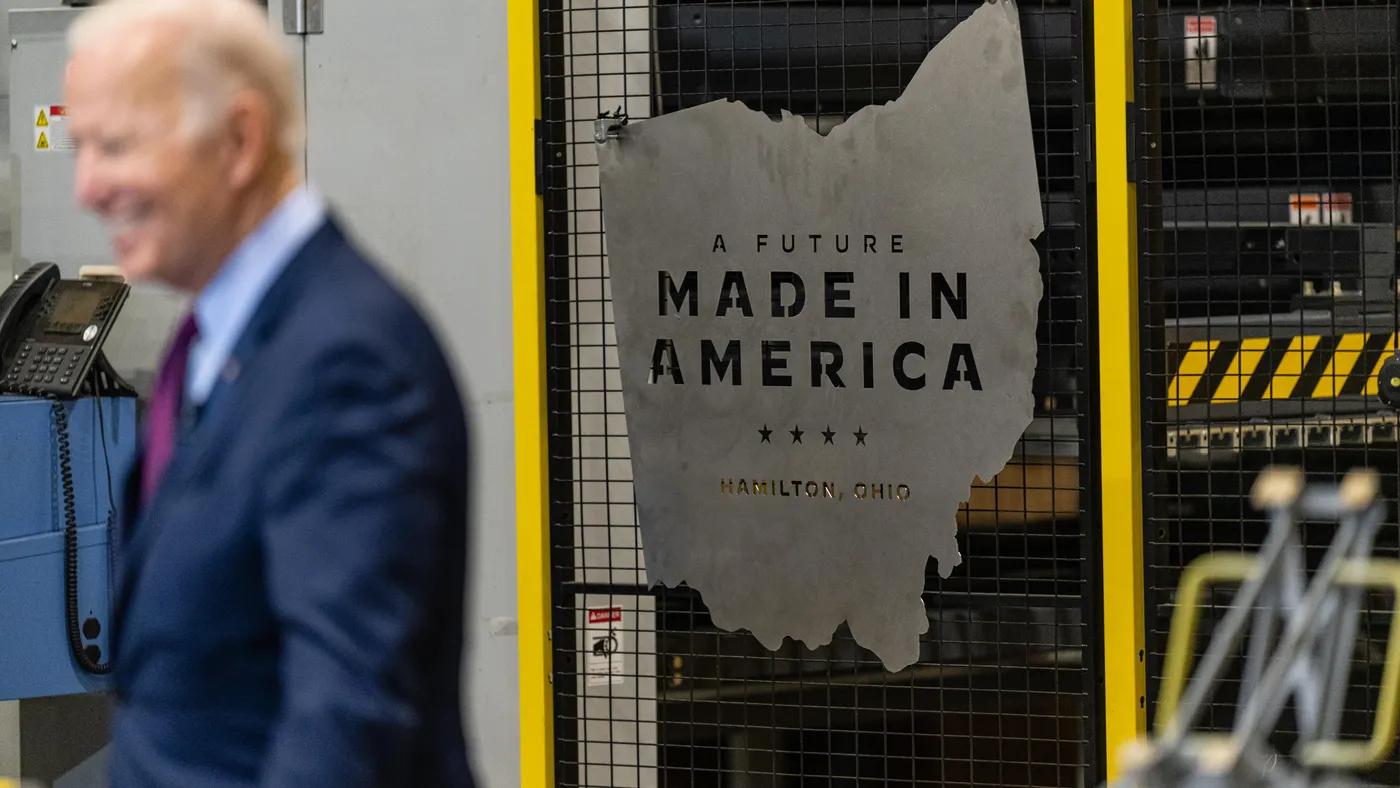It's been a busy year for manufacturers in the U.S.
In the 12 months since the passage of the Inflation Reduction Act, companies have hurriedly launched a variety of manufacturing plans in pursuit of the law’s lucrative tax credits for U.S.-made components. States have eagerly courted these projects, offering companies tax incentives and collaborating on workforce development programs to support the growth of thousands of jobs.
The impact of the IRA on the U.S. manufacturing industry is clear, with 39 states seeing factory and other project announcements worth more than $86 billion.
However, an analysis of manufacturing project announcements from environmental and economic advocacy group E2 reveals not all states are growing equally in this push, with some garnering billions in investment while others have seen no new projects at all. The IRA has also drawn more concentrated investment in certain sectors, like electric vehicle and battery manufacturing, while others such as biofuels have only seen one project announced.
The report gathered publicly available information from private companies regarding project announcements since the law was passed. E2 notes that its estimates are conservative, given that only 156 of 210 total project announcements included investment data and 142 project announcements included jobs estimates.
The compiled data is revealing, showing emerging hubs, regional differences and more. Here's Manufacturing Dive's top four takeaways from the E2 report.
1. South Carolina and Georgia are the biggest winners
Two states can claim the highest levels of investments and the greatest number of projected jobs thanks to the IRA – South Carolina and Georgia.
Georgia came in first with $12.3 billion worth of investment across 19 projects announced in the past year, bringing an estimated 12,791 jobs. South Carolina is estimated to bring in $10.9 billion across 18 projects and an estimated 10,272 jobs.
North Carolina was also near the top with $9.9 billion, nine projects and an estimated 3,656 jobs. The three states have become hubs in the Southeast region's "battery belt" with automakers and their ecosystems of component suppliers setting up an array of manufacturing facilities.
In other clean energy sectors, South Carolina, Georgia and Ohio saw the greatest number of solar projects.
A few other states snagged the country's only investments in other clean energy sectors. Maine is home to the only energy efficiency project announced in the past year, while Mississippi received the only investment in biofuels and Nevada saw the only geothermal investment.
Regionally, the South is the clear pick for investment, garnering more than 50 projects. Northern states meanwhile lags behind. Across Washington, Oregon, Montana, Idaho, Utah, Wyoming, North Dakota, South Dakota, Nebraska and Kansas and Iowa there were a total of five projects.
States in the southern U.S. are a hub for investment
Amount of funds, jobs and projects listed in IRA-linked announcements, per state
2. EVs dominate investment priorities
When combined, investments focused on EV or battery manufacturing represented more than 60% of the publicly announced projects linked to the IRA.
EV-related investments, not including batteries, comprised the largest number of announced projects, representing 46% of 210 projects. Battery/storage projects made up 17% of investment. Altogether, battery and EV-related investments included 115 plants across 21 states, with roughly 13 states that are seeing investment from both sectors.
Outside of the big three trio of South Carolina, North Carolina and Georgia, a few other states emerged as hubs for investment. New York has seen the announcement of four battery projects, and Colorado and Arizona have each seen three.
The Midwest is another hub for EV-related projects, with Michigan, Ohio, Indiana, Illinois and Wisconsin seeing a total of 29 sites announced in the sector.
EV, solar industries draw the most projects
3. IRA attracts foreign direct investment
When it comes to who in the world is making investments, foreign companies led or were involved with nearly 100 projects, while U.S.-based companies led or were involved with 118 projects.
South Korea-based firms announced the most projects foreign direct investment projects by far at 25, including more than $16 billion worth of investment and 13,515 jobs. Canada-based firms came in a distant second with 12 projects, just under $2 billion of investment and 6,965 jobs. EV and battery powerhouse China saw six firms announce six projects worth $4.2 billion and 2,550 jobs.
Foreign investments came primarily from the continents of North America, Europe, Asia and Australia, with no firms based in Africa or South America publicly announcing projects.
Firms in South Korea, Japan lead the world in IRA-linked investments
4. Solar, other clean energy sectors gain speed
The IRA spurred investments in nine clean energy sectors, showing interest in manufacturing projects beyond batteries and EVs. Solar, in particular, has seen significant investment, with nearly 30 factories across 18 states. There were at least 18 wind turbine factories or wind product facilities announced, totaling $1.7 billion in investment.
While fewer in project count, hydrogen investments were high, with only 12 projects outpacing total investment compared to wind, at $5.1 billion. Grid/electrification projects were also sizable, with 12 projects totaling $1.5 billion.





